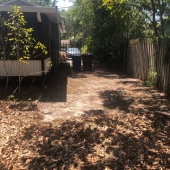
 9
9





 11
11




"Study books and observe nature; if they do not agree, throw away the books." ~ William A. Albrecht
 9
9




The Browns’ have changed their model of production from a focus on crop yield to one of restoring soil health by integrating the production of cattle and crops together. After a series of setbacks while attempting to follow the standard spring wheat production model, Gabe and Paul realized that by focusing on the soil first, their costs of production fell and their ranch’s resiliency to the extremes of weather increased. Extreme dry years and wet years did not significantly affect their ability to be both productive and profitable. During a particularly dry year, one of the Browns’ neighbors implored them to remove bales of hay from a field that was visible from the highway because he was trying to make a case for a drought declaration and assistance from the government. Because of the capacity of the Browns’ soil to capture and store water, they had much greater production than anyone else in the vicinity. This begs the question, was the drought caused by lower than normal precipitation in the area, or the lack of soil health and the capacity of the soil to store and supply water to the plants?
Casual observation of a healthy soil should reveal a dark color from organic matter, arthropods (insects and their cousins) and hopefully, earthworms. The soil should have stable aggregates, yet be easy to dig into with hand or shovel. Plant roots should grow straight down and throughout the soil. There should be many pores of various sizes with little or no evidence of compacted horizontal layering. You should be able to easily break apart healthy soil with your fingers.
A healthy soil should perform the basic roles of water cycling, nutrient cycling, and physical support. It should perform all of these while supporting a diversity of life that will facilitate its continued capacity to function.
Find a location in your area where the soil has never been cleared of native vegetation or tilled. Look at that soil in its native condition to get an idea what a functioning soil should look and act like
Once we recognize soil organisms as the drivers of soil health, we understand that the most important element in soil nutrient cycling is not nitrogen, phosphorous or potassium, but carbon.
Soil organic matter often makes up less than 5% of the soil by weight, but controls 90% of soil functions essential for plant growth. As soil organic matter increases from 1% by weight to 3% by weight, the water holding capacity of the soil doubles.
The easiest source of food for soil microbes is the sugar exuded through the roots of living plants. The next easiest food source is dead plant roots. Followed by above-ground crop residues such as straw, chaff, husks, stalks, flowers, and leaves. When root exudates, dead roots, or plant residues are not available, soil microbes will feed on existing soil organic matter.
The diversity of plants grown in the soil determines the diversity of the diet received by the organisms that live in the soil
Research regarding plant diversity (Tilman et. al. 2006) suggests that as few as five different species of plants can have a tremendous impact on total plant biomass production.
Soil should always be covered by growing plants and/or their residues, and therefore, rarely be visible from above. This is true regardless of land use (crop, hay, pasture, forest, range or garden).
As the years pass, soil managed under a system that maintains soil cover with a diverse crop rotation becomes more biologically active, cycling nutrients, building organic matter and even warming the soil through increased respiration
Every acre of healthy soil has the equivalent weight of two or more cow’s worth of microorganisms living in the soil. And like all livestock, they need to be fed. This is why it is vital that each field host a diversity of plants that occupies the soil with living roots and covers it from above
Leaving a field bare or fallowed means the underground herd of microbes will not be fed and the soil functions dependent on those organisms will decline accordingly.
Sourdough Without Fail Natural Small Batch Cheesemaking A Year in an Off-Grid Kitchen Backyard Dairy Goats My website @NourishingPermaculture @KateDownham






 4
4




Greetings from Brambly Ridge
 5
5




"Soil microbiologists have determined that roughly 90% of the functions we expect soil to perform are biologically driven . . . Appreciating soil biology and all that it does is essential to improving soil health and becoming an economically and environmentally sustainable producer."
"If the soil is managed with an understanding of the habitat requirements for the SFW, the capacity of the soil to function can be restored."
Blog: 5 Acres & A Dream
Books: Kikobian Books | Permies Digital Market

 3
3




"Never doubt that a small group of thoughtful, committed citizens can change the world; indeed, it's the only thing that ever has."-Margaret Mead "The only thing worse than being blind, is having sight but no vision."-Helen Keller
 1
1




 2
2




Zone 6, 45 inches precipitation, hard clay soil





|
Skool. Stay in. Smartness. Tiny ad:
Rocket Mass Heater Resources Wiki
https://permies.com/w/rmh-resources
|





